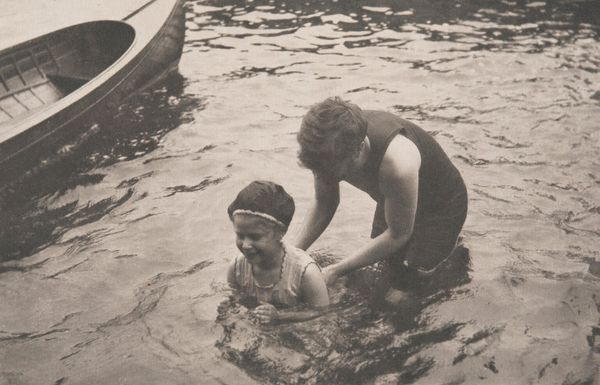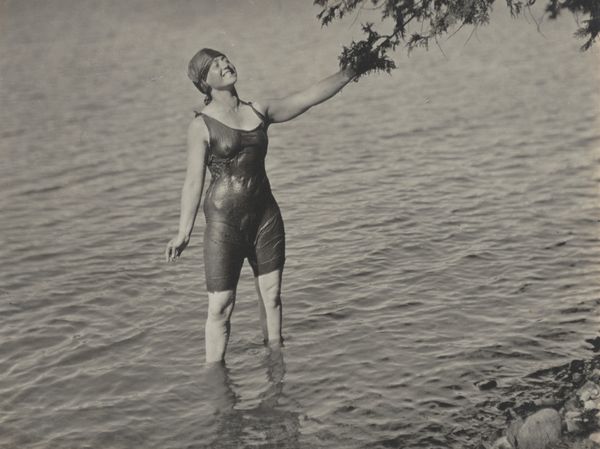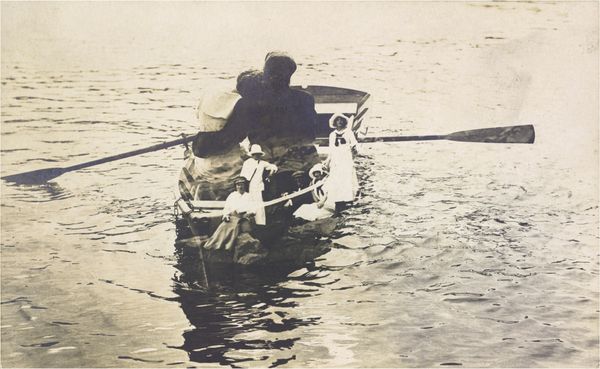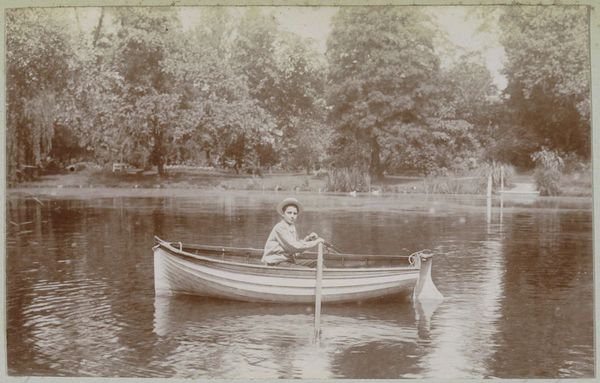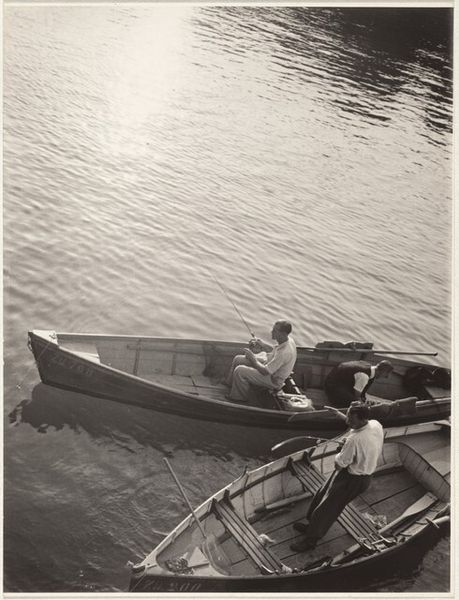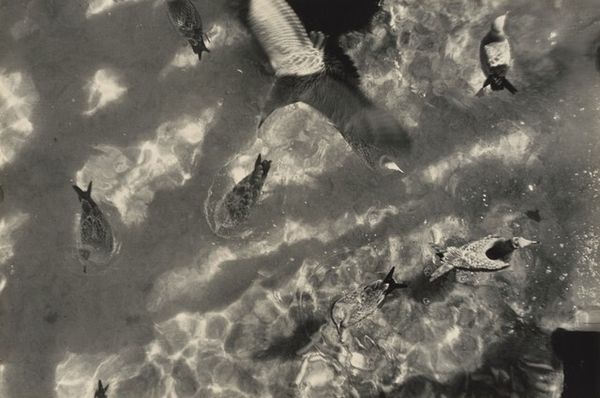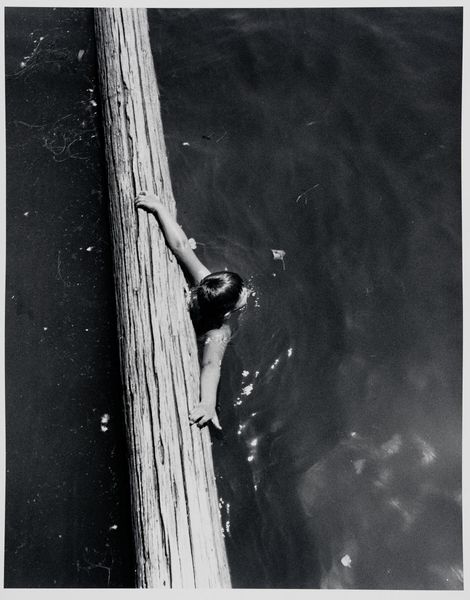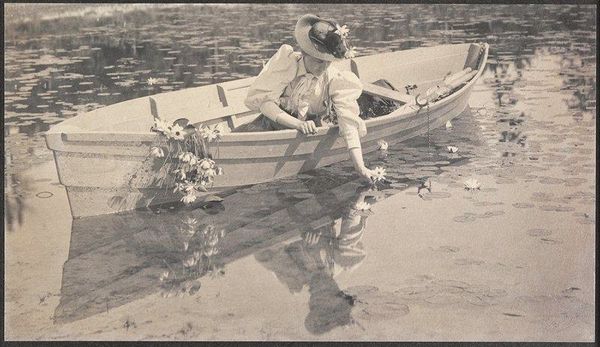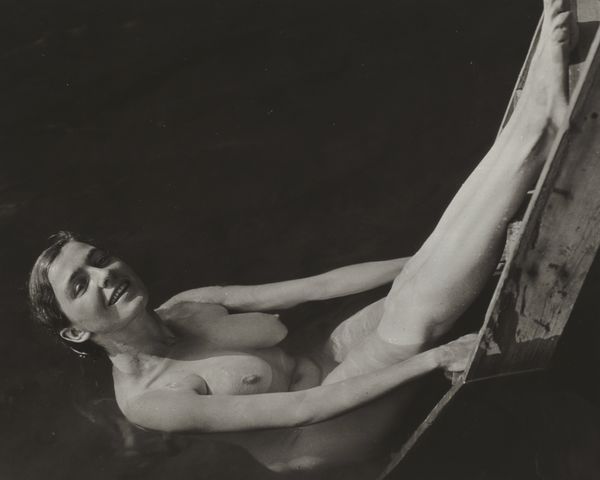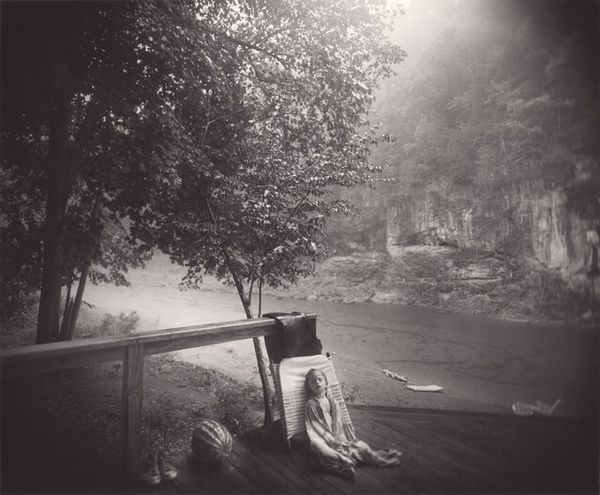
photography
#
portrait
#
pictorialism
#
landscape
#
photography
#
black and white
#
monochrome
#
modernism
#
monochrome
Dimensions: image: 9 × 11.1 cm (3 9/16 × 4 3/8 in.) sheet: 10 × 12.6 cm (3 15/16 × 4 15/16 in.) mount: 31.2 × 24.9 cm (12 5/16 × 9 13/16 in.)
Copyright: National Gallery of Art: CC0 1.0
Editor: This is Alfred Stieglitz's photograph, "Kitty Stieglitz and Edward Stieglitz," from around 1918. It has a relaxed, almost carefree feeling, despite being a black and white photograph. What do you make of this, as a portrait of this time? Curator: The photograph strikes me as an interesting negotiation of identities within early 20th century America. Here we have what appears to be a portrait of leisure, capturing a moment of domesticity. Yet, consider the context. The rise of modernism challenged traditional social structures and expectations, particularly concerning gender and familial roles. The sitters are posed in an aquatic, primordial landscape. Editor: So, are you saying this image breaks away from traditional portraiture, to hint at the emerging societal norms of the time? Curator: Exactly! Stieglitz’s work often challenged conventional ideas. Think about what it meant for Kitty, possibly his relative or close acquaintance, to be depicted in swimwear, actively participating in outdoor recreation. Was she only included as someone to manage and keep track of, rather than on her own accord? The era saw shifting perspectives on women's roles and expressions of freedom. Is it a revolutionary statement? Not overtly. Yet it normalizes female agency and self-representation in ways earlier portraits often did not. Consider the gaze. What does Kitty’s almost assertive look toward the camera suggest to you? Editor: That she isn’t merely an object? That there’s self-determination present? I guess I hadn't considered all of that. Thanks for highlighting the social narrative! Curator: Indeed. It encourages us to consider art’s power not just to depict, but to subtly shape and reflect cultural change. We've begun to excavate the many meanings present in one picture, of the period and people. Editor: I'll definitely look at art differently now. Appreciating both subject and subtext feels crucial to gaining the most meaning from art.
Comments
No comments
Be the first to comment and join the conversation on the ultimate creative platform.

